Jangchungdan Park (장충단공원)
2.3Km 2020-03-18
261, Dongho-ro, Jung-gu, Seoul
Jangchungdan Park is located on the northeastern foot of Namsan Mountain. On August 20th, 1895, Empress Myeongseong was killed by Japanese soldiers in Gyeongbokgung Palace and many Korean soldiers such as Yi Gyeong-jik and Hong Gye-hun died while trying to hold back the intruders. In memory of these soldiers, Emperor Gojong built the Jangchungdan Shrine in November 1900 at the current site of the Shilla Hotel guesthouse. The shrine was lost during the Korean War and the area was renovated into a park in 1919.
On September 22, 1984, Jangchungdan Park was designated the 374th neighborhood park of Korea and part of the park was merged with Namsan Park. The remaining area retained the name “Jangchungdan Park” and is still home to cultural assets such as the Jangchungdan Memorial Stone, Supyogyo, Seungjeongjeon, Gwanseongmyo, and Waryongmyo. The park is considered a landmark of patriotism since it contains the 1919 Independence Movement of Korea Memorial Stone and other monuments dedicated to people such as Han Yong-un, Yu Gwan-sun, and Gim Yong-hwan who fought for the independence of Korea.
Dong-Lim Knot Museum (동림매듭박물관)
2.3Km 2021-12-21
10, Bukchon-ro 12-gil, Jongno-gu, Seoul
+82-2-3673-2778
Opened in April 2004, Dong-Lim Knot Museum exhibits a variety of decorative traditional Korean maedeup (knots): norigae for hanbok, belts, pouches, as well as materials like thread, cord, and accessories. Housed in a hanok, a traditional Korean house, the gallery has a variety of exhibits, including old and new artwork, and creations that reflect modern trends.
SAINT JAMES SAMCHEONG[Korea Quality]/세인트 제임스 삼청[한국관광 품질인증]
2.3Km 2024-06-26
78 , Samcheong-ro, Jongno-gu, Seoul
+82-742-4628(extension number 207)
The Saint James Samcheong store opened in July 2016 in Samcheong-ro, Jongno-gu, Seoul. The store exemplifies the quiet yet bustling atmosphere of the Samcheong-dong district, and is well-known for its marine styling. It sells men’s, women's and children's wear, plus shoes, bags and fashion accessories. Featured brands include SAINT JAMES (France), BUDDY (Japan), VEJA (France), SOLUDOS (USA), and BRONTE (Netherlands).
Saint James - Samcheong Branch [Tax Refund Shop] (세인트제임스 삼청)
2.3Km 2024-04-23
B2F, 124, Singomae-ro, Giheung-gu, Yongin-si, Gyeonggi-do
-
Hwanggeum Kongbat (황금콩밭)
2.3Km 2023-10-10
9 Mapo-daero 16-gil, Mapo-gu, Seoul
Hwanggeum Kongbat specializes in bean curd, using 100% Korean-grown soybeans and salt to make their bean curd fresh daily. The restaurant is famous for their method of making a bean curd that is smooth and maintains the nutty yet sweet flavor of the soybeans.
Seoul Hyochang Park (서울 효창공원)
2.3Km 2024-07-09
177-18 Hyochangwon-ro, Yongsan-gu, Seoul
+82-2-2199-7608
Hyochang Park covers 122,245 square meters spanning across Hyochang-dong and Cheongpa 2-dong. It is a historic landmark that once contained several royal tombs, and was known at that time as Hyochangwon. The cemeteries that were originally located in Hyochangwon belonged to Crown Prince Munhyo, King Jeongjo’s first son who died at the age of five; Royal Noble Consort Uibin of the Seong Clan, King Jeongjo’s royal concubine and Crown Prince Munhyo’s mother; Royal Noble Consort Sugui of the Park Clan, King Sunjo’s royal concubine; and her daughter Princess Yeongon. The royal tombs were moved to Seooreung Tombs in the waning months of the Japanese colonial period. The Japanese empire began the development of Hyochangwon into a park in 1924, and the Japanese governor-general officially assigned the site as a park in 1940.
Presently, several of Korea’s greatest leaders are buried in Hyochang Park. The remains mostly belong to independence activists including Yoon Bong-gil, Lee Bong-chang, and Baek Jeong-gi, whose graves are collectively known as Samuisa Tomb. A statue of Lee Bong-chang has been built in the graveyard. Among the other patriotic martyrs who are interred in the park are Kim Gu and some of the key figures of the provisional government such as Lee Dong-nyeong, Cha I-seok, and Cho Seong-hwan. An ancestral shrine named Uiyeolsa has been built along the main gate and holds the portraits of the deceased independence activists.
Banyan Tree Club & Spa Seoul (반얀트리 클럽 앤 스파 서울)
2.3Km 2021-06-22
60, Jangchungdan-ro, Jung-gu, Seoul
+82-2-2250-8000
Banyan Tree Club & Spa Seoul is a membership club & hotel operated by Banyan Tree Hotel & Resort, Singapore’s top resort brand. The new urban resort is a place where visitors can enjoy quality spa services while taking in a panoramic view.
Located on Namsan Mountain in the center of Seoul, Banyan Tree Club & Spa Seoul consists of three buildings: the Club, the Hotel and the Festa. Facilities include an outdoor sports center and other luxurious amenities like an outdoor pool, 23 cabanas, a sauna, fitness center, driving range, tennis court, outdoor playing field, spa, and kids’ club. The hotel houses 34 suites with private relaxation pools, and 16 members-only club rooms. The two Presidential Suites located on the top floor offer a fantastic night view of Seoul and Namsan Mountain.
Ca'del Lupo (까델루뽀)
2.3Km 2020-04-27
5-5, Jahamun-ro 16-gil, Jongno-gu, Seoul
+82-2-734-5233
Ca'del Lupo is an Italian restaurant, closely located to Paris Baguette in Hyoja-dong, Jongno-gu near Gyeongbokgung Palace Station. Though the restaurnat masters delicious homemade Italian cuisine on the inside, the exterior is wholly Korean. This unique combination of Hanok (traditional Korean house) style housing and Western foods is drawing a lot of people to Hyoja-dong. The great mix of both cultures can be seen in the sophisticated decorations and from the amazing food. The herbs they use are picked directly from the restaurant's personal garden. But to enjoy the atmosphere here, you will have to make a reservation far in advance.
Châtaigne (샤떼뉴)
2.3Km 2021-12-29
19, Samcheong-ro 5-gil, Jongno-gu, Seoul
+82-2-736-5385
Châtaigne is a French restaurant housed in a charming hanok (traditional Korean house) that was remodelled to accommodate dining tables and chairs. Châtaigne uses seasonal ingredients to create a simple and unique French course meal.

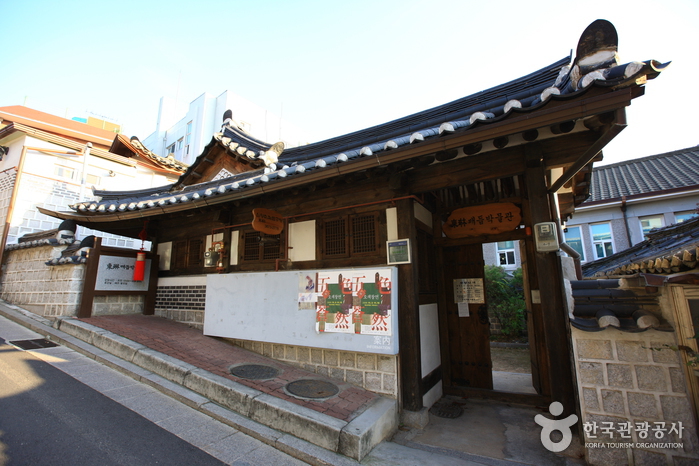
![SAINT JAMES SAMCHEONG[Korea Quality]/세인트 제임스 삼청[한국관광 품질인증]](http://tong.visitkorea.or.kr/cms/resource/08/2628608_image2_1.jpg)
![Saint James - Samcheong Branch [Tax Refund Shop] (세인트제임스 삼청)](http://tong.visitkorea.or.kr/cms/resource/56/2889656_image2_1.jpg)
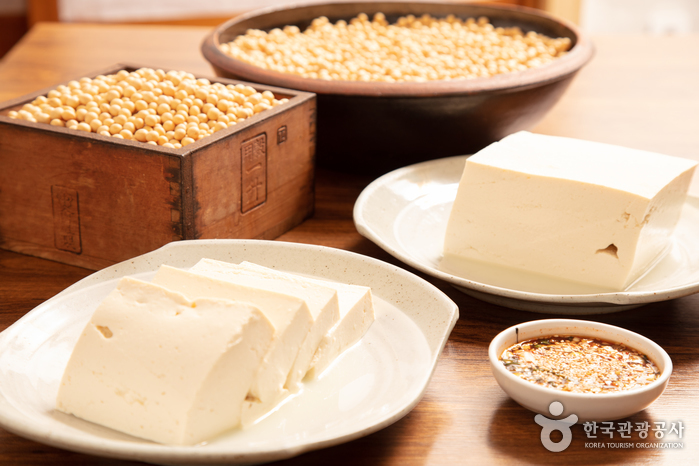

![Mary Jane [Tax Refund Shop] (메리제인)](http://tong.visitkorea.or.kr/cms/resource/33/2878733_image2_1.jpg)
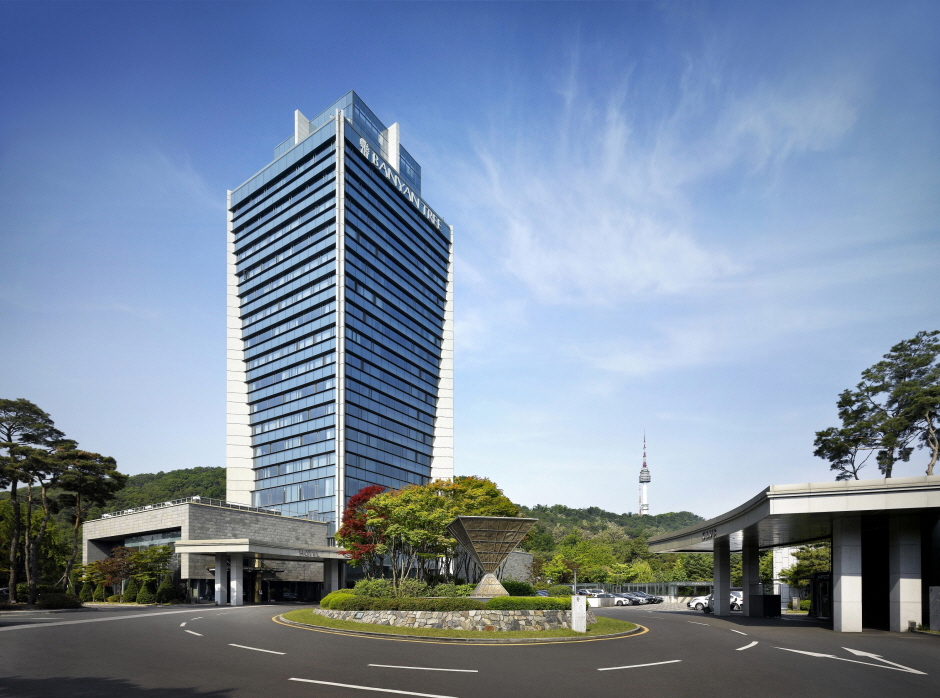
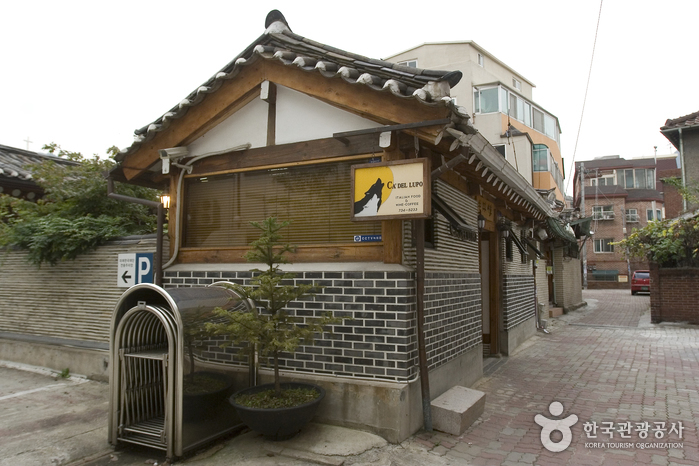
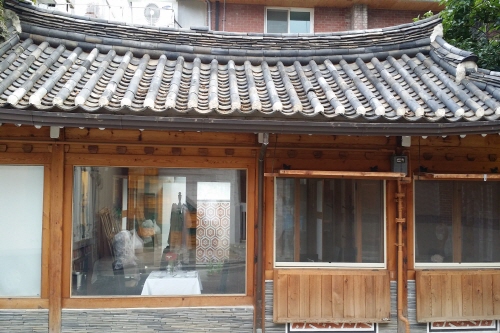
 English
English
 한국어
한국어 日本語
日本語 中文(简体)
中文(简体) Deutsch
Deutsch Français
Français Español
Español Русский
Русский